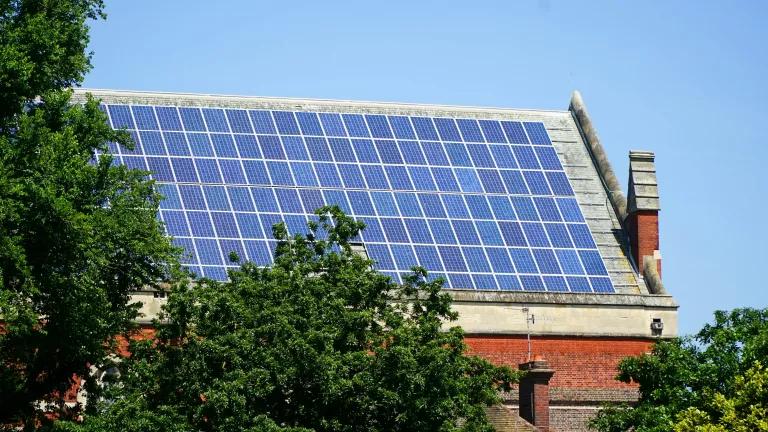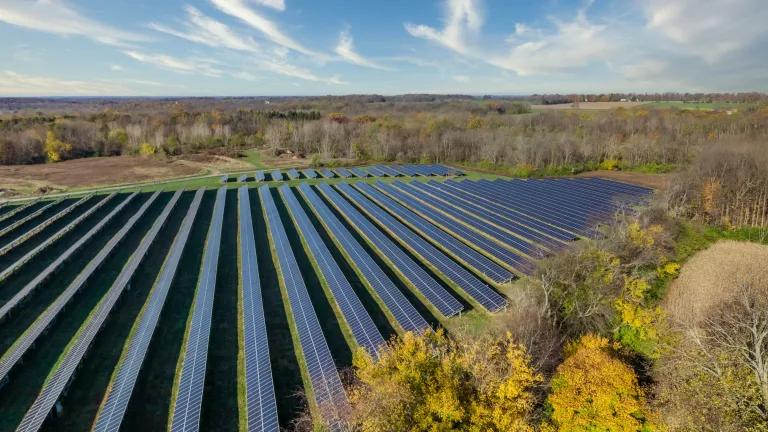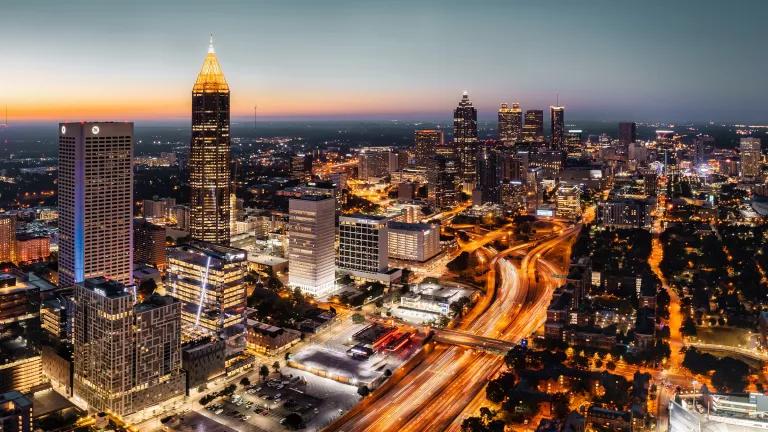Trump Is Playing Mr. Grinch with Renewable Energy

Part of NRDC's Year-End Series Reviewing 2017 Energy & Climate Developments
Throughout 2017, when it comes to wind and solar, the Trump administration has been doing its best Grinch impersonation—he and his team seem to want to be the executive branch that stole our clean energy future. But like the Whos down in Whoville, cities and states are bringing the holiday cheer anyway. And just as importantly, even before accounting for policy support, wind and solar are now most often the cheapest form of new generation. That makes renewable energy like a snowball rolled over the lip of a hill—its market share keeps getting bigger, faster. We don’t have a deadline like a certain jolly old soul but the speed of clean energy deployment matters, and we need policies to help speed it up, and to keep fighting the Grinch’s efforts to slow it down.
Here are just a few of the Grinchy steps the Trump administration has taken this year to try to get in the way of wind and solar:
- EPA administrator Scott Pruitt has started the process of pulling the plug on the Clean Power Plan.
- Secretary of Energy Rick Perry has proposed a massive bailout to coal and nuclear plant owners and slashing the budget for renewables and energy efficiency at the Department of Energy by 70 percent.
- Secretary of Interior Ryan Zinke is trying to illegally slash the size of public monuments so that coal, oil and, it turns out, uranium mining companies can get more of our natural resources for cheap.
- Trump himself is considering recommendations to impose import tariffs on solar panels, despite widespread, bipartisan opposition.
- And most recently, pro-fossil fuel forces in Congress came close to undermining the main federal incentives for wind and solar as part of the rushed and scandalous tax bill they just passed.
Last minute fixes to the tax bill look like they have mostly spared federal incentives for wind and solar, but keep in mind, permanent tax breaks for fossil fuels already dwarf those for renewables by a margin of 7 to 1, and the bill provides a new handout to oil companies in the form of further tax breaks on foreign income and opening the Arctic Wildlife Refuge to drilling. It’s clear that Trump and his allies in Congress are doing all that they can to prop up dirty energy and slow down the progress of clean energy.
While visions of coal may dance in Trump’s head, many states and cities keep plowing ahead, bringing clean energy to all. To wit:
- There are now over 50 cities that have committed to 100 percent renewable energy, five of which are already there, and 387 mayors that have joined states, businesses and universities that have committed to reaching the Paris climate goals.
- California recently announced that it’s on track to meet its 50 percent renewables goal well before the 2030 target year.
- California is also still work towards codifying a groundbreaking agreement to close the Diablo Canyon nuclear power plant, retrain its workers and replace the power with clean energy options led by energy efficiency, wind, and solar power.
- Illinois has stepped up its renewables program.
- From Massachusetts to Virginia, these states are making progress by advancing offshore wind. The first offshore wind project in the United States just completed its first full year of operation. In these states, businesses are also choosing wind and solar in record amounts.
Voters have also started to make clear that they didn’t vote for a dirty environment in the fall of 2016. In Virginia, New Jersey, and even in Alabama, voters have elected leaders that made clean energy, and a healthy environment a central part of their platform. Even states with a supermajority of conservative legislators such as Kansas and North Carolina (which just signed up for an additional 3 gigawatts of solar over the next 45 months) have continued to make progress on renewable energy.
The good news behind a lot of this good news is that wind and solar are finally just plain cheaper in most places than most other forms of new energy, as the chart above shows. For a while, they’ve been easier to build, cleaner, and generated more jobs per dollar invested—but being cheaper matters, too. And we can now anticipate the tipping point—when new wind and solar facilities become cheaper than existing coal and natural gas plants.
As a result, wind and solar energy are rapidly growing, and are going to become a central part of our energy mix, but timing and scale are critical. Because of the urgent threat of climate change, because we all want our kids to be able to drink clean water, because breathing clean air matters—the speed and size of that growth also matter.
We need a lot of renewables to avoid a lot of pollution, and we need them before the worst effects of climate change are locked in—and that means policy matters. We need cities and states to keep it up, and we need the federal government to get back into the game of supporting and investing in clean energy.
If memory serves, in the end, the Grinch’s heart grows, and he rides his sleigh down the mountain, bringing Christmas back to Whoville. Maybe Trump will recognize that to grow jobs and make America safer, healthier, and more prosperous, he should help build the momentum for wind and solar. I’m afraid this this story might end differently though.
In the meantime, we can be grateful that our city and state leaders are behind clean energy, pushing it forward—and the economic fundamentals are adding momentum. The snowball of clean energy success is rolling faster and faster and getting bigger and bigger, and we all know what happens to cartoonish villains who get in front of snowballs rolling downhill.




